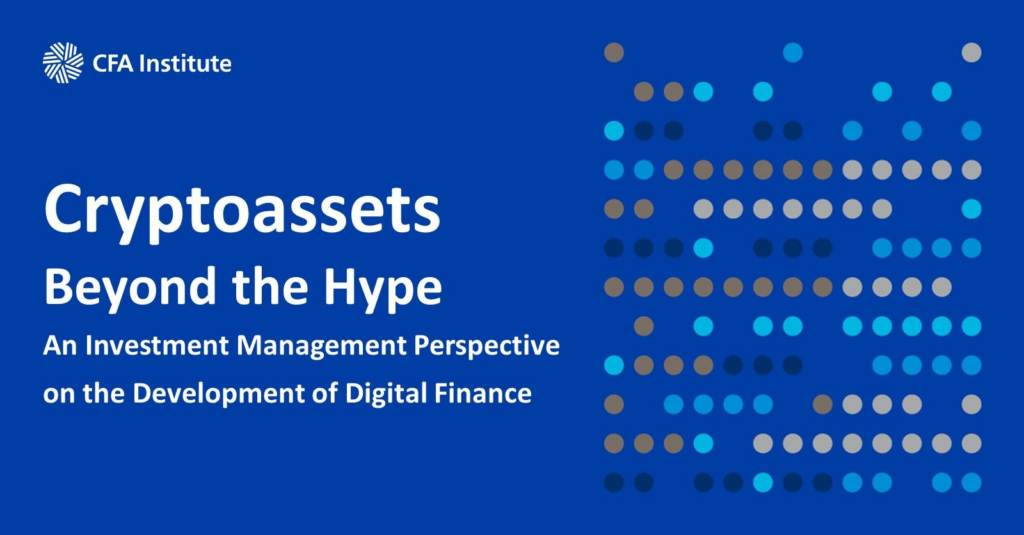SFDR and EU Taxonomy Disclosures: Four Data Challenges for Asset Managers
Asset managers’ environmental, social, and governance (ESG) claims have attracted greater scrutiny amid greenwashing concerns. Regulators have recently fined DWS, BNY Mellon, and Goldman Sachs, among others, for misstating their products’ ESG characteristics and, in turn, misleading consumers. While the EU has had laws against inaccurate financial product claims for some time — the MiFID Conduct of Business rules, among them — regulation may not have kept pace with ESG investing’s growing popularity. This gap has led firms to make unsubstantiated claims on sustainability- and ESG-related issues.
The MiFID II requirements came into effect in 2018. Article 19(2) of MiFID II outlines high-level requirements for firms to ensure that all information addressed to clients or potential clients, including marketing information, is fair, clear, and not misleading.
Due in part to greenwashing concerns, the EU Commission introduced the EU Taxonomy and Sustainable Finance Disclosure Regulation (SFDR) statutes, which went into effect in January 2022 and March 2021, respectively. These regulations are designed to be implemented together, but for asset managers, complying with them can be a resource-intensive endeavor.

What new requirements do these regulations impose?
The EU Taxonomy provides a framework for asset managers to use to report on how their economic activities contribute to six key sustainability principles:
- Climate mitigation
- Climate change adaptation
- Circular economy
- Pollution prevention and control
- Impact on sustainable use and protection of water and marine resources
- Protection and restoration of biodiversity and ecosystems
In contrast, the SFDR mandates firms disclose climate risks and other sustainability information embedded in their financial products and firm-wide policies. It also introduces three levels of disclosure requirements that have become de facto product classifications and are graded on their environmental objectives, as outlined in the figure below. Precontractual disclosure templates are another feature of the SFDR. These were designed to standardize the presentation of product sustainability information and became mandatory in January 2023.
| SFDR Disclosure Requirements | Applicability |
| Article 6 | Funds with no ESG integration. |
| Article 8 | Products that promote investments or projects with positive environment or social characteristics, and good governance principles alongside non-ESG traits. |
| Article 9 | Products that target a social or environmental investment primary objective. Products must comply with the “do no significant harm” principle, which means proving that the product does not in any way significantly harm any of the EU Taxonomy objectives. Article 9 products are sometimes referred to as “dark green products.“ |
Standardized sustainability disclosures should make the impact firms have on the environment and society and the impact that environmental and social issues have on firms — so-called double materiality — more transparent. As such, the EU Commission mandates that disclosures be easily accessible to end investors and included on websites and in annual reports and precontractual documents. In theory, standardized and transparent disclosures should create a more level playing field between asset managers and end investors, who often lack access to data that could better inform their investment decisions and with which they could compare investment products. Overall, the regulations should help regulators and end investors verify firms’ modus operandi and that their offerings are as sustainable as they purport them to be.

How have firms fared in the scope and quality of their sustainability disclosures?
So, how effective are these new requirements? To find out, I searched for the mandatory Taxonomy and SFDR disclosures of three of the largest asset managers operating in Europe by AUM — referred to here as Asset Manager A, Asset Manager B, and Asset Manager C — to see how difficult they were to find. The analysis took place from mid-October 2022 to December 2022. The key findings are outlined below.
1. The data isn’t easy to locate.
In its Supervisory Briefing, the EU’s independent regulator, ESMA, states that end investors should not have difficulty locating this material. In my analysis, however, disclosures were listed under various website sections, each with different and often unintuitive titles — “Sustainable Investment Centre,” “Reporting Page,” and “ESG Documents” (changed slightly for anonymity) — and finding them was often like searching for needles in the proverbial haystack.
Furthermore, disclosures were not always in the expected documentation. For example, Article 5 of SFDR requires asset managers to disclose “in their renumeration policies, information on how those policies are consistent with the integration of sustainability risks” (sustainability risks in their investment decision-making processes). The SFDR legislation does not specify which document should contain this information, but firm compensation/remuneration policy documents would be the logical choice. Only Asset Manager B’s renumeration policy document had this information, however. After some searching, I found the equivalent information for the other two asset managers in their Annual Reports. Although firms should take some responsibility for making this information findable, the EU Commission could also specify the location of firm-wide disclosures given the prescriptive nature of such SFDR regulations as the separate publication on Regulatory Technical Standards.
2. The data is missing.
At the time of this analysis, EU Taxonomy regulation required asset managers to disclose the proportion of their total assets with exposure to taxonomy-eligible activity, or activity that is likely to make a significant contribution to any of the six environmental objectives, as well as their exposures to sovereign and supranational entities and other undertakings outside the scope of the taxonomy regulation.
But I could only find this information for Asset Manager A, which reported that 0% of its activity was Taxonomy eligible. Yet Asset Manager A offers various sustainable funds with underlying assets that presumably contribute to one of the six environmental objectives. So, rather than 0% Taxonomy exposure, Asset Manager A likely faced challenges gathering the necessary data to make informed calculations and simply disclosed 0% exposure rather than provide an incorrect figure and potentially face fines for overstating their environmental credentials to consumers. Downward bias, therefore, may be a recurring problem with such disclosures.
In January 2023, more SFDR requirements became mandatory. Firms now have to report the Taxonomy alignment of their products using the precontractual product disclosure templates set out in the SFDR Regulatory Technical Standards (RTS), among other mandates. Taxonomy alignment means that a fund invests in activities that contribute substantially to achieving one of the six environmental objectives set out by the Taxonomy, does not harm any of the other five objectives, has minimum safeguards that are met (e.g., OECD, United Nations guidelines, etc.), and complies with technical screening criteria.
As it stands, in early 2023, Asset Manager A and Asset Manager B reported their funds’ Taxonomy alignment using the new mandatory templates. The disclosures are listed in precontractual annexes under the “Sustainability-related disclosures” sections on each fund website sampled. The use of the templates made product information far easier to locate and more transparent compared with entity-level disclosures, located in various places on asset manager websites. However, as of January 2023, Asset Manager C had not yet disclosed its Taxonomy alignment for any of its funds sampled or adopted the use of the precontractual templates. Further, Asset Manager B and Asset Manager C had not provided disclosures for Taxonomy eligibility at the entity level.

3. The data is hard to collect.
While firms may be struggling to make Taxonomy eligibility disclosures at the entity level, they are generally faring better with alignment disclosures at the product level. To report on Taxonomy alignment at the product level, asset managers must go through all the underlying assets in which a fund invests and assess whether they contribute to one of the six environmental objectives. Since funds typically hold multiple underlying investments, such a calculation may require considerable data collection from investee companies as well as time and human resources. Moreover, sustainability data for the underlying investments may not always be available — a quandary some firms have been open about.
Reporting on Taxonomy eligibility at the entity level presents a greater challenge. Firms are required to go through all their assets under management and calculate the proportion of undertakings likely to contribute to one of the six environmental objectives. This type of calculation requires that relevant data exists. These challenges may explain why Asset Manager B and Asset Manager C had yet to disclose this information.
4. The data is hard to access.
The complexity of Taxonomy and SFDR regulations doesn’t just pose a challenge to asset managers. Disclosure requirements often involve technical detail and esoteric language. For example, the average investor might find it difficult to comprehend “the proportion of Taxonomy-eligible activity” vs. “aligned activity” (with definitional differences between the two), or distinguish between “Principal Adverse Impacts” (or “PAI”) and a “Do no significant harm” (or a “DNSH”) assessment. Without a comprehensive understanding of Taxonomy and SFDR regulations, both of which span at least seven documents, excluding supplementary publications by ESMA, end investors may not find them all that useful, and consequently, the regulations may do little to reduce information asymmetries between asset managers and end investors all that much. Furthermore, it is important to consider whether this is the type of sustainability information end investors would seek out.
Conclusions
New regulations tend to present teething problems for the newly regulated, and that appears to hold true for Taxonomy and SFDR and asset managers. Given these findings, the phased rollout of both regulations should give firms more time to both understand what’s required of them and collect the necessary data. It should also give the EU Commission a better sense of how it can work with firms to achieve the Taxonomy and SFDR objectives. While the technical details may not be easily comprehensible by, or directly useful to, end investors, Taxonomy and SFDR together create a regulatory environment that should encourage asset managers to thoroughly check their sustainability methodologies and categorizations before making sustainability claims. In time, this could make the sustainability landscape clearer by providing end investors with a high-level understanding of which asset managers comply with sustainability objectives. This will help them make more informed choices about what firms and products align with their own sustainability preferences. The effects of SFDR and Taxonomy are already beginning to show: Firms such as Amundi, DWS, and BlackRock downgraded their Article 9 products to Article 8 after realizing they may not meet the former’s requirements.
In spite of this progress, the firms in this analysis are among the largest in Europe and are likely to have more resources dedicated to compliance. Yet compliance still proved challenging. What about firms that are genuinely committed to sustainability but lack the resources to demonstrate it through compliance with Taxonomy and SFDR? Fines for non-compliance could be just as costly, so this approach may discourage firms from offering sustainable products altogether. This could have the greatest effect on Article 8 and Article 9 products, which are arguably the most ESG impactful but require the most detailed sustainability reporting. The EU Commission may have to take a softer approach with smaller firms to ensure that regulation does not become counterproductive.
If you liked this post, don’t forget to subscribe to Market Integrity Insights.
All posts are the opinion of the author. As such, they should not be construed as investment advice, nor do the opinions expressed necessarily reflect the views of CFA Institute.
Image credit: ©Getty Images/ Caliphoto
Professional Learning for CFA Institute Members
CFA Institute members are empowered to self-determine and self-report professional learning (PL) credits earned, including content on Market Integrity Insights. Members can record credits easily using their online PL tracker.



Fascinating read, seeing the difference between the theory (as presented in CCI and the ESG Certificate) and the complex practice of SFDR compliance. New regulations inevitably need a period of bedding down – it will be interesting to see how this evolves.